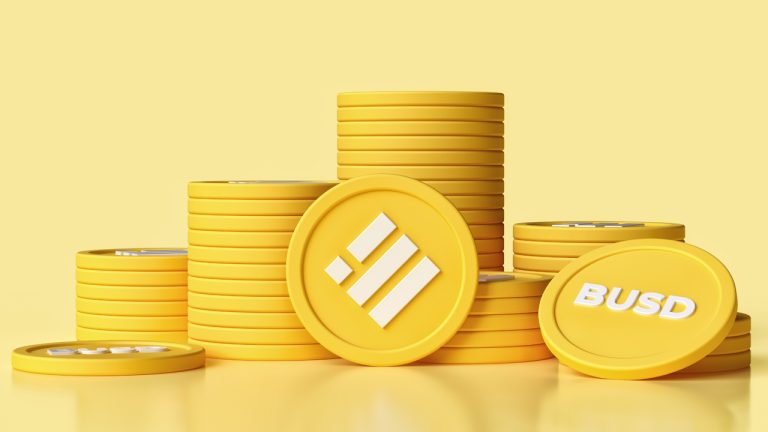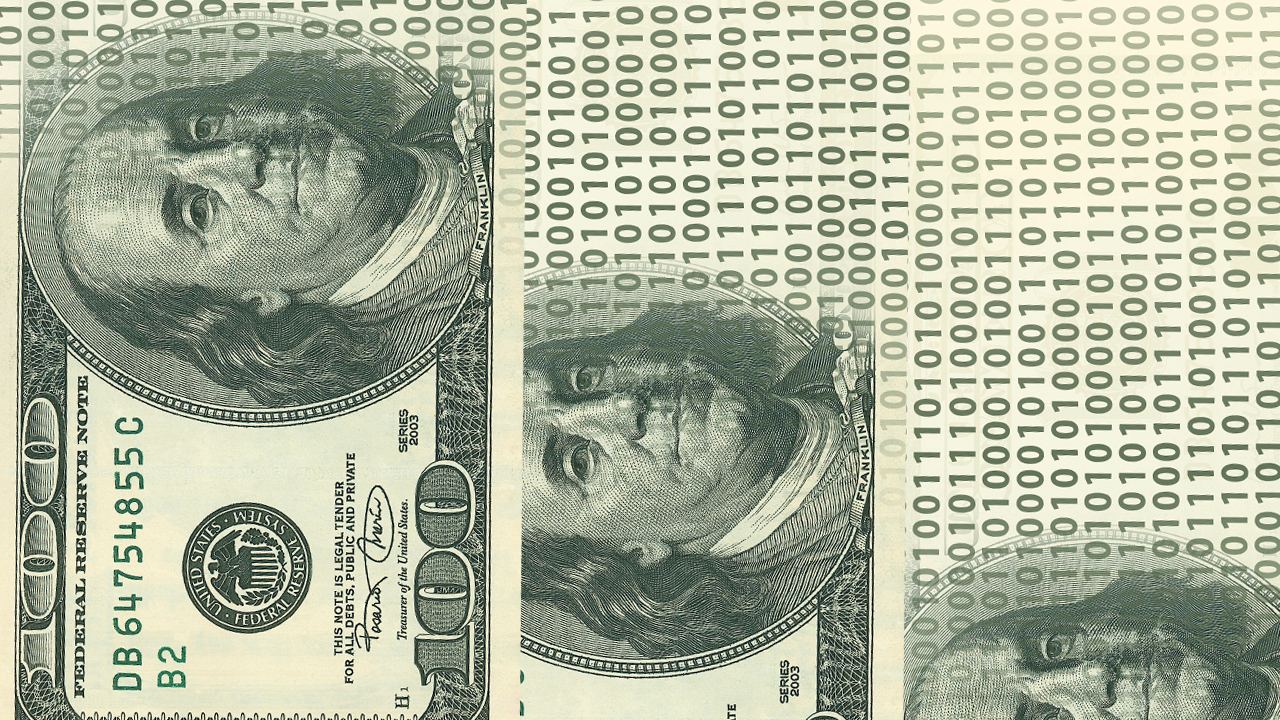 Six days ago, a few hours before the blockchain infrastructure platform Paxos announced it would no longer mint BUSD stablecoins, $2.86 billion worth of BUSD were redeemed. Currently, Binance is the most active exchange trading BUSD tokens, and the stablecoin still commands roughly 10.7% of the crypto economy’s $67.71 billion in global trade volume over […]
Six days ago, a few hours before the blockchain infrastructure platform Paxos announced it would no longer mint BUSD stablecoins, $2.86 billion worth of BUSD were redeemed. Currently, Binance is the most active exchange trading BUSD tokens, and the stablecoin still commands roughly 10.7% of the crypto economy’s $67.71 billion in global trade volume over […]
The stablecoin market, in general, is going through hard times, though the algorithmic coins suffered the most.
The notorious failure of the Terra USD (UST) stablecoin affected the crypto market, but the algorithmic stablecoins took the harshest punch. Since its peak in April 2022, the market share of algorithmic stablecoins shrank almost tenfold.
According to a new report from CryptoCompare, the current market share of algorithmic stablecoins stands at 1.71%, while its all-time high record in April 2022 reached 12.4% of the whole crypto market. Before its crash, Terra USD accounted for 79.8% of the algorithmic stablecoin’s market share.
The stablecoin market is generally suffering, with January becoming the tenth consecutive month of decline in its market capitalization. In December 2022, centralized exchanges saw a net outflow of $3.65 billion in stablecoins — the largest since November 2021. According to CryptoCompare:
“The decline in stablecoin dominance suggests market participants are rotating out of stablecoins and into risk assets.”
Tether (USDT), USD Coin (USDC) and Binance USD (BUSD) remain the leaders in the stablecoin market, with USDT accounting for 48.7% of the market share — the highest dominance recorded since October 2021.
Related: Stablecoin data points to ‘healthy appetite’ from bulls and possible Bitcoin rally to $25K
The report also highlights the so-called “stablecoin war,” heated up by Coinbase’s decision to introduce a zero-fee trade to swap USDT for USDC in December 2022. Minted by the exchange, USDC currently accounts for less than 1% of the stablecoins trading volume on Coinbase. Earlier in 2022, Binance also introduced its BUSD auto-conversion feature, which automatically converted users’ balances of USDC, USDP and TrueUSD to BUSD on a 1:1 basis.
In late January, the CEO of Visa, Al Kelly, expressed his belief that, along with central bank digital currencies, stablecoins have the potential to play a meaningful role in the payments space.

Following the fallout of FTX, implementing zero fee BTC trading and some notable global acquisitions Binance’s market dominance has surged throughout 2022.
During a year plagued by crises such as the collapse of FTX and Celsius, data shows that crypto exchange Binance has emerged as the clear “winner” of 2022 according to Arcane Research.
A Jan. 3 report from Arcane highlighted that Binance saw its market dominance soar throughout 2022. As of Dec. 28 last year it had captured 92% of the Bitcoin (BTC) spot market and 61% of the BTC derivatives market by volume:
“There are no other evident ‘winners’ of 2022 other than Binance when it comes to the crypto market structure and market dominance. No matter how you look at it in terms of trading activity, Binance is the crypto market.”
Binance’s BTC spot market dominance was 45% at the start of 2022 meaning that it more than doubled, while its share of the BTC derivatives market increased by almost one third.

The “spot trading volume” is an indicator that measures the total amount of Bitcoin being transacted on spot exchanges on any given day.
The report suggests the increase in Binance’s BTC spot market dominance predated the fallout of the second largest exchange by volume FTX, and began to surge after it removed fees for certain trading pairs on Jul. 7, 2022.
The exchange also made some notable acquisitions to boost its global coverage in 2022 such as the Japanese trading platform Sakura Exchange BitCoin and Indonesian digital currency brokerage firm Tokocrypto.
Binance has been one of the few exchanges to increase the number of staff it employs over the year while its peers such as Kraken and Coinbase have been forced to lay off staff during the current crypto winter.
Related: Tribulations and triumphs: The biggest surprises in crypto of 2022
Looking ahead to 2023, Arcane predicted in a Dec. 30 report that Binance would implement trading fees again in 2023 which would lead to a “normalization of the market dominance.”
As noted in a Jan. 3 report from digital asset data firm CryptoCompare, removing fees allows exchanges to attract customers but they “must be wary to remain profitable” and “cannot employ this strategy for long periods of time without hurting their bottom line.”
Binance could also be subject to increased regulatory scrutiny in 2023 — particularly relating to its native token BNB (BNB) — as following the fallout of the FTX empire there has been an increased focus on crypto regulations globally.
Analysis from Bitcoin advocate Nic Carter suggested while Binance’s CEO, Changpeng Zhao, has been vocal about his support for exchanges providing proof-of-reserves (PoR), the PoR provided by Binance was incomplete as “it only covers Bitcoin, which only represents 16.5% of their client assets.”

Despite the bad numbers of daily trading, there are some signs of market revival, at least for Bitcoin-based products.
As the crypto market shows signs of a gradual recovery, with Bitcoin (BTC) holding above the psychologically important $20,000 level after its initial crash to $17,600 in June, this month still sets a record low for an average daily aggregate product volume across all digital asset investment products.
According to the report from CryptoCompare, published on Oct. 27, the average daily trading volume of institutional crypto products had fallen 34.1% — to $61.3 million in October. Almost all the products covered in the report recorded a large decline in average daily volumes, ranging from -24.3% to -77.5%.
The downward trend in daily trading is not limited to the recent market turmoil but dates back to November 2021, with a slight exception for May 2022. This October became the second month since September 2020 in which average daily volumes have fallen under $100 million.
However, the report traces some optimistic developments in other market markers. The total Assets under Management (AUM) across all digital asset investment products rose 1.76% to $22.9 billion compared with September. This was the first increase in AUM since July.
Related: A record 55,000 Bitcoin, or over $1.1 billion, was just withdrawn from Binance
AUM in trust products, which accounts for 77.3% of the market, rose 2.34% to $17.7 billion in October, while AUM represented by ETFs fell 1.59% to $2.21 billion.
Another important marker is net flows. This October, weekly net flows for Bitcoin-based products recorded inflows averaging $8.37 million in October, and short Bitcoin-based products recorded the largest outflows, averaging $5.03 million. The situation is a lot worse for Ethereum products, which recorded the second-largest negative net flows of $2.87 million.
At the same time, Ethereum blockchain's native token Ether (ETH) recorded better gains than BTC by Oct. 26, jumping approximately 14% to reach its weekly high of $1,554. By press time, the price of ETH stands at $1,508.
 Following the introduction of the Crypto Market Integrity Coalition (CMIC) with 17 member firms last February, the organization has added eight new members. New coalition recruits include Bittrex, Merkle Science, Crystal Blockchain and Bitgo. 8 Crypto Market Firms Join Crypto Market Integrity Coalition to Improve Self-Regulation Seven months ago, 17 crypto firms announced the formation […]
Following the introduction of the Crypto Market Integrity Coalition (CMIC) with 17 member firms last February, the organization has added eight new members. New coalition recruits include Bittrex, Merkle Science, Crystal Blockchain and Bitgo. 8 Crypto Market Firms Join Crypto Market Integrity Coalition to Improve Self-Regulation Seven months ago, 17 crypto firms announced the formation […] During the last month, the stablecoin economy’s market valuation dropped from $155.23 billion to $153.34 billion on July 20, sliding roughly 1.21%. The top two stablecoins by valuation, tether and usd coin, have seen their market caps slide over the last 30 days, while BUSD and DAI have seen increases. Stablecoin Markets Lose Close to […]
During the last month, the stablecoin economy’s market valuation dropped from $155.23 billion to $153.34 billion on July 20, sliding roughly 1.21%. The top two stablecoins by valuation, tether and usd coin, have seen their market caps slide over the last 30 days, while BUSD and DAI have seen increases. Stablecoin Markets Lose Close to […]
BTC’s market cap is way smaller than gold's, but the percentage of Bitcoin held by institutional investors suggests that the current pricing reflects an excellent discount.
Bitcoin's (BTC) price is down 56% year-to-date, but the correction was not strong enough to remove the digital asset from the list of top-20 global tradable assets. Bitcoin’s current $400 billion market capitalization stands higher than traditional companies like Exxon Mobil, Walmart and Procter & Gamble, but there’s always the question of whether a direct comparison between a commodity like Bitcoin and equities is valid.

Analysts and investors favoring stocks constantly remind crypto advocates that Exxon Mobil posted $25.79 billion in earnings over the past 12 months, as a justifying example of its valuation. But on the flip side, earnings don’t necessarily explain how Boeing booked $16.1 billion losses in two years, even as it holds an $87.1 billion market capitalization.
Measuring a commodity market value can be tricky. For example, in the case of silver, only 50% of precious metal is used in industrial applications. There are individuals and companies holding the asset for investment in the form of bars, coins, or jewelry and these are not "productive" revenue-generating assets.
Bitcoin’s value is vastly inferior to gold’s $11.2 trillion market capitalization, but what does “$400 billion” even mean, and how does it compare to broader asset classes such as global equities, real estate and debt markets?
The first question one should ask is: Has gold been a good store of value over the past five years? To find answers, traders have to compare its price against other trillion-dollar asset classes like global equities, oil and real estate. The overall goal for any store of value is to maintain the purchasing power, regardless of price fluctuations during the period.

From July 2017 until July 2022, gold has underperformed the remaining asset classes by 18% or higher. The precious metal broke above $2,000 in August 2020, but it could not keep up with the ever-growing prices of stocks, housing and energy. In comparison, the United States monetary base, bank deposits and cash, expanded by 48.5% in the same period.
One could argue that gold has failed to sustain its purchasing power over time, but it’s likely that more time is needed to evaluate how the precious metal will behave if the current global crisis accelerates or extends longer than expected. Meanwhile, in this same time period, Bitcoin presented 840% gains from July 2017 to July 2022.
There’s a valid question about Bitcoin’s volatility and rightfully so given the fact that the asset regularly faces 20% or higher weekly price moves. But there’s a simple and quick solution to alleviate this oscillation, or at least reduce the impact on a longer time frame. The dollar cost average (DCA) strategy consists of regularly buying pre-set amounts of an asset on a daily, weekly or monthly basis.

For instance, following this strategy for the past five years would have resulted in a $19,192 average entry cost. So even if the 8.3% gain to the current $20,800 price might not be enough to compete with gold, it certainly shows a more predictable form in which to use Bitcoin as a long-term store of value.
According to CryptoCompare, the Bitcoin investment vehicles under management (AUM) totaled $15.9 billion in June. This metric includes exchange-traded products such as Grayscale GBTC and exchange-traded notes from multiple providers. This ratio is equivalent to 4% of Bitcoin’s current $400 million market capitalization.

In comparison, the gold-backed ETF products stood at $221.7 billion in June, according to data from GoldHub. If one excludes the 50% “non-financial-related use of gold” like jewelry and industry, the remaining market capitalization stands at $5.6 trillion. Therefore, the fund‘s exchange-traded investment vehicles correspond to 4% of the adjusted gold‘s market value.
Related: Bitcoin is now in its longest-ever 'extreme fear' period
At $20,800, Bitcoin‘s investment vehicle holdings ratio matches the gold markets. While the $400 million market cap level might concern some investors, the asset’s adoption is minimal compared to the adoption of gold, a precious metal with a 7,000-year history as an investment vehicle.
Considering the fiv-year period that was analyzed and using a simple DCA strategy to rule out sharp price oscillations, gold is currently a better store of value, but that does not invalidate Bitcoin’s 8.3% gain in the period. In short, both assets have yet to prove themselves.
The views and opinions expressed here are solely those of the author and do not necessarily reflect the views of Cointelegraph. Every investment and trading move involves risk. You should conduct your own research when making a decision.

New data shows that Ethereum challenger Cardano (ADA) is seeing a surge in adoption with the number of ADA wallets hitting a new all-time high despite a shaky April for the smart contract platform. A new report by CryptoCompare shows that the number of addresses holding Cardano rose to a record high last month amid […]
The post Cardano Adoption Surges As Number of ADA Wallets Breaks New All-Time High: CryptoCompare Report appeared first on The Daily Hodl.

Blockchain market data provider CryptoCompare is revealing the most potent threat to Ethereum (ETH) in the decentralized finance landscape during the first quarter (Q1) of 2022. In a new report, CryptoCompare says that Ethereum is experiencing stagnant growth in the total value locked (TVL) – the amount of all staked crypto assets that are generating […]
The post This Altcoin Is the Biggest Threat to Ethereum (ETH) So Far This Year, According to CryptoCompare appeared first on The Daily Hodl.

A new report from CryptoCompare finds that top-tier digital asset exchanges such as Coinbase, FTX, Gemini and Binance have continued to increase their market share over the last six months. In the latest Exchange Benchmark report, CryptoCompare finds that top-tier exchanges have gained a further seven percent market share since August 2021. “Top-Tier exchanges have increased […]
The post Coinbase, FTX and Biggest Crypto Exchanges Consolidate Power As Traders Prefer Lower Risk Platforms: Report appeared first on The Daily Hodl.